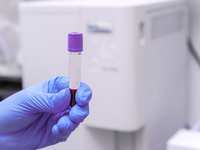- Categories :
- More
Prepare for Cold Weather Safety Inside and Out

When you think of Houston weather, cold weather and ice probably aren’t the first things coming to mind. However, Texans are no strangers to winter weather. It’s essential to know how to handle frosty temperatures inside and outside and what to do when the unexpected happens.
Stay Safe and Warm at Home
Weatherproofing your home can help keep you warm and safe. If you use a fireplace for added heat, ensure the chimney and flue are clean and in good working order. Check or install carbon monoxide and smoke detectors and replace batteries as needed.
Portable space heaters can also provide cost-effective warmth. However, it’s essential to take precautions to avoid burns and fires. Make sure space heaters are at least three feet away from flammable items, such as bedding, curtains or holiday decorations. Place them on flat, solid, nonflammable surfaces away from children and pets. Always plug space heaters directly into the wall outlet and turn them off before leaving the room or going to sleep.
Never heat your home with a camp stove, grill, oven or stove.
Dealing with a Power Outage
Winter storms may cause you to lose power for several hours or days. Prepare for a power outage by building an emergency kit and making a plan for medication and medical equipment with your doctor.
During a power outage, unplug appliances and electronics to avoid damage from power surges. Keep refrigerators and freezers closed. Typically, without power, food remains cold for about four hours in a refrigerator and frozen in a full freezer for about two days.
A portable generator can help keep essential medical equipment working, food cold and rooms warm. Portable generators should only be used outside in a dry area more than 20 feet from doors or windows. Never run a portable generator inside your garage or home.
Avoid Cold Weather Illnesses and Injuries
Whether a winter power outage leads to cold rooms or you’re enjoying winter sports outside, cold weather illnesses and injuries can occur before you realize it.
Two common conditions to watch for are frostbite and hypothermia. Knowing and recognizing signs of these conditions can help you or your loved one get treatment as soon as possible.
Frostbite
Frostbite occurs when the skin and underlying tissues freeze. It can happen in any body part but most often affects the cheeks, chin, ears, fingers, nose or toes. Without treatment, frostbite can cause serious, permanent damage.
Symptoms of frostbite include:
-
A feeling of pins and needles followed by numbness
-
Aching, pain or throbbing
-
Cold, hard, pale or waxy skin
-
Redness in the skin
If you see signs of frostbite, get medical care immediately. If it isn’t possible to travel to the ER, go to a warmer area, apply first aid and call 911 if frostbite is severe or there’s little improvement with home treatment.
People with diabetes or other conditions that affect circulation need to take extra caution. Poor blood flow increases the risk of frostbite.
Hypothermia
Hypothermia happens when your body loses heat faster than it can warm up. When your body runs out of stored energy, your temperature will drop, causing hypothermia. The condition typically occurs in freezing temperatures. However, being in water, excess sweat or rain can cause hypothermia at above 40 degrees Fahrenheit.
Early symptoms of hypothermia include:
-
Confusion, disorientation or memory issues
-
Extreme tiredness
-
Loss of coordination
-
Shivering
Late symptoms include:
-
Blue coloring in the lips or skin
-
Loss of consciousness
-
No shivering
-
Slow breathing and heart rate
Take action at the first signs of hypothermia:
-
Get to a warmer place.
-
Offer warm, non-alcoholic drinks if the person is awake.
-
Take off wet clothing.
-
Use loose, dry layers of blankets or clothing to warm the body’s core.
Hypothermia is always an emergency. Seek medical care immediately.
The St. Luke’s Health emergency team is here to help. Call 911 or visit a St. Luke’s Health ER.

















